Calculation of Energy–Volume Curves and Bulk Modulus Using the Deep-Learning Kinetic Energy Functional AdvanceSoft25#
In density functional theory (DFT) calculations for predicting material properties, the most widely known method is Kohn-Sham DFT (KS-DFT). However, a major challenge is that the computational cost scales as with system size.
To address this, Orbital-Free DFT (OF-DFT) has been proposed, where the computational cost scales linearly as , enabling efficient calculations for large-scale systems.
On the other hand, a key challenge of OF-DFT is the lack of a kinetic energy functional (KEF) with practical accuracy.
To overcome this, AdvanceSoft Corporation developed a deep-learning kinetic energy functional AdvanceSoft25 (AS25), which applies a proprietary "field-deepening" algorithm, and integrated it into Advance/OF-DFT.
AS25 maintains the scaling advantage of OF-DFT while achieving higher accuracy in electron density calculations compared to conventional KEFs.
This article presents applications of AS25 in the following calculations:
- Comparison of energy–volume curves between conventional KEFs and AS25
- Calculation of energy–volume curves and bulk modulus using AS25
Computational Conditions#
Comparison of Energy–Volume Curves: Conventional KEFs vs. AS25#
As representative semiconductor materials, we used AlAs (Zinc-blende structure, mp-2172) and GaP (Wurtzite structure, mp-8882), obtained from the Materials Project.
KS-DFT and OF-DFT calculations were performed while varying the volume under the following conditions:
- Wavefunction cutoff energy : ~ 820 eV
- Pseudopotential: OEPP
- Exchange-correlation functional : LDA
- k-point sampling : ~ 0.04 Å-1
KS-DFT was performed using Quantum ESPRESSO 6.7 (AdvancceSoft-modified version).
For OF-DFT, we used AS25 as well as well-known functionals TFλvW, LKT, and HC1.
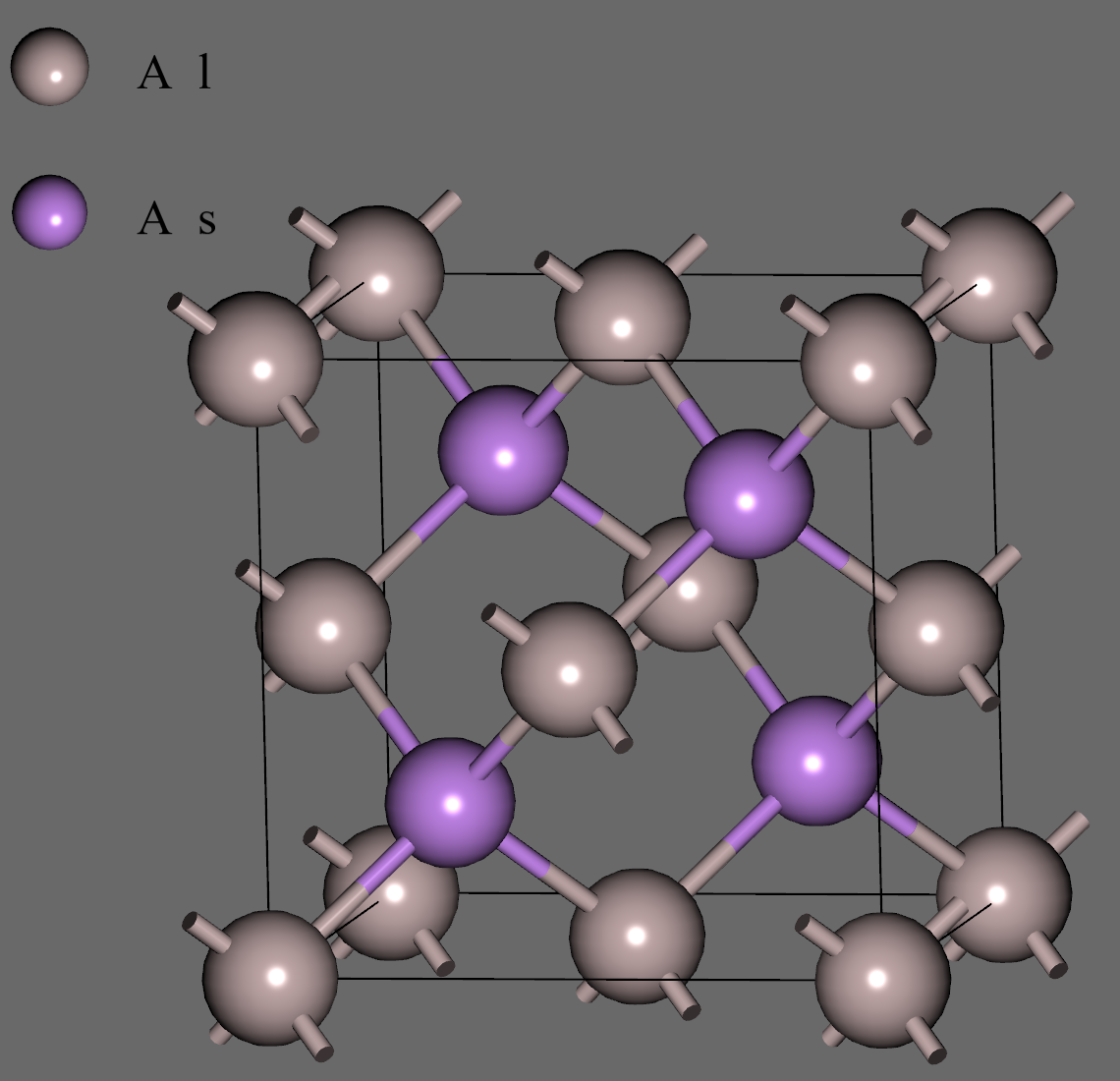
|
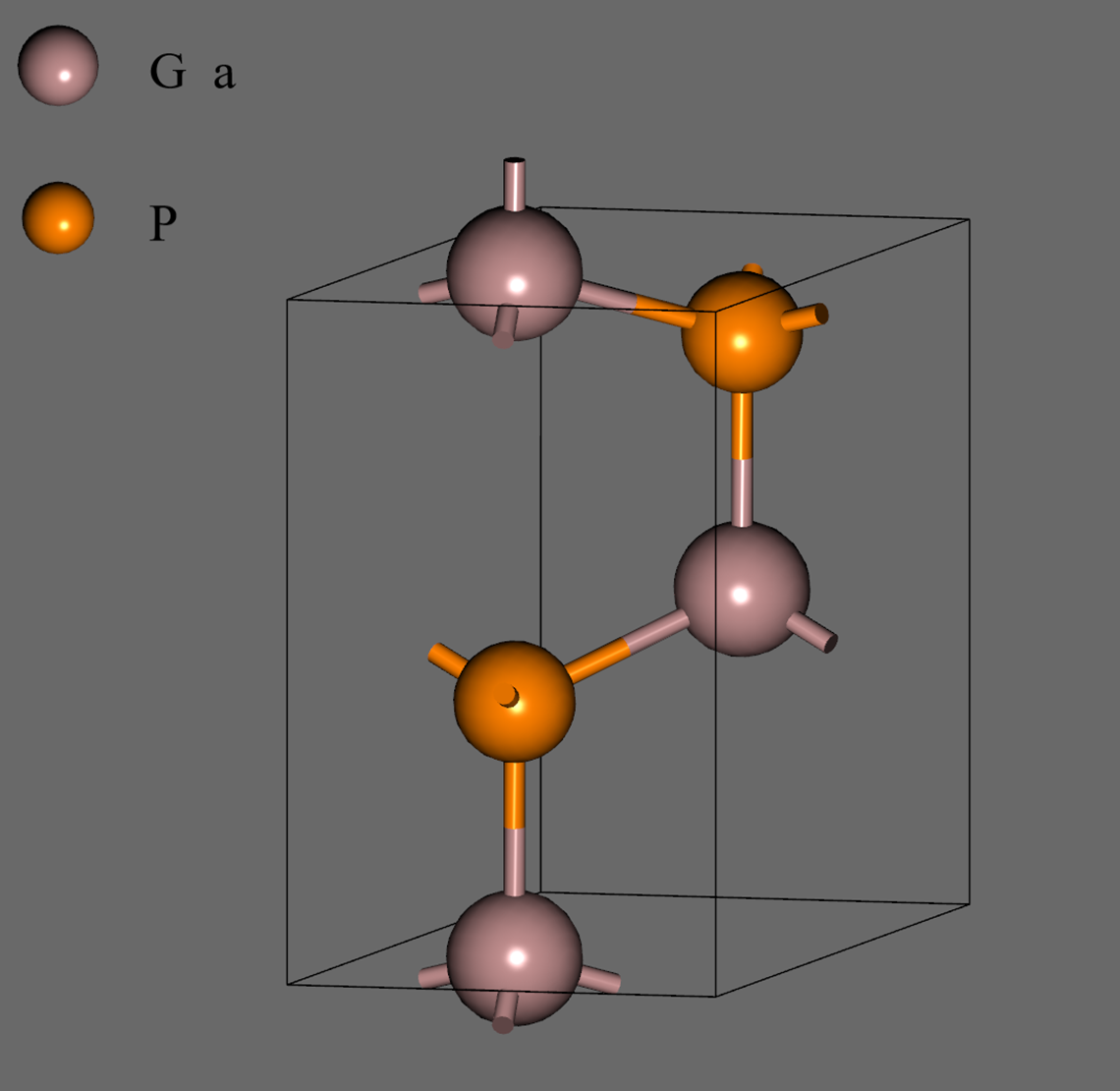
|
| AlAs | GaP |
Energy–Volume Curves and Bulk Modulus Calculation with AS25#
For bulk modulus calculations, we used approximately 400 structures from prior work by Manzhos et al.2, obtained from the Materials Project.
KS-DFT and OF-DFT calculations were performed while varying the volume under the following conditions:
- Wavefunction cutoff energy : 1250 eV
- Pseudopotential : OEPP
- Exchange-correlation functional : LDA
- k-point sampling : 0.05 Å-1
KS-DFT was performed using Quantum ESPRESSO 6.7 (AdvancceSoft-modified version).
For OF-DFT, we used only AS25.
Results#
Comparison of Energy–Volume Curves: Conventional KEFs vs. AS25#
The calculated energy–volume curves for each structure are shown below.
The x-axis and y-axis correspond to normalized volume relative to the reference structure and the relative total energy, respectively.
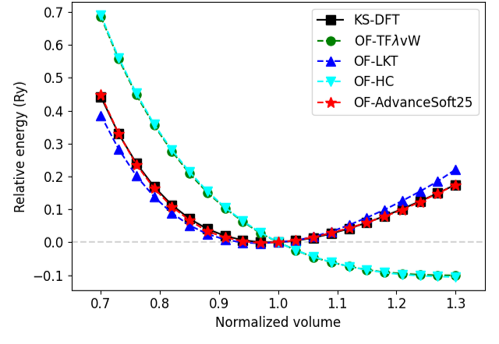
|
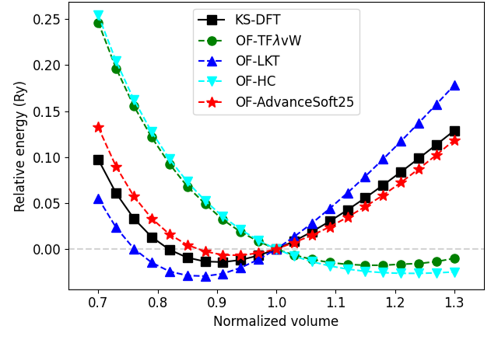
|
| AlAs | GaP |
From these results, AS25 clearly reproduces the KS-DFT energy–volume curves with the highest accuracy among all tested functionals.
By contrast, the HC functional, which previously showed the highest accuracy among conventional functionals in benchmark for standard structures, fails to reproduce the KS-DFT curves at all.
This highlights the poor transferability of HC due to its strong dependence on parameter optimization for each system.
Energy–Volume Curves and Bulk Modulus Calculation with AS25#
The calculated energy–volume curves for each structure are shown below. The numeric identifiers next to chemical formulas correspond to their Materials Project IDs.
The bulk modulus was obtained from the second derivative of the energy at equilibrium volume :
In the figures, red and blue numbers indicate the bulk modulus values (in GPa) obtained using AS25 and KS-DFT, respectively.
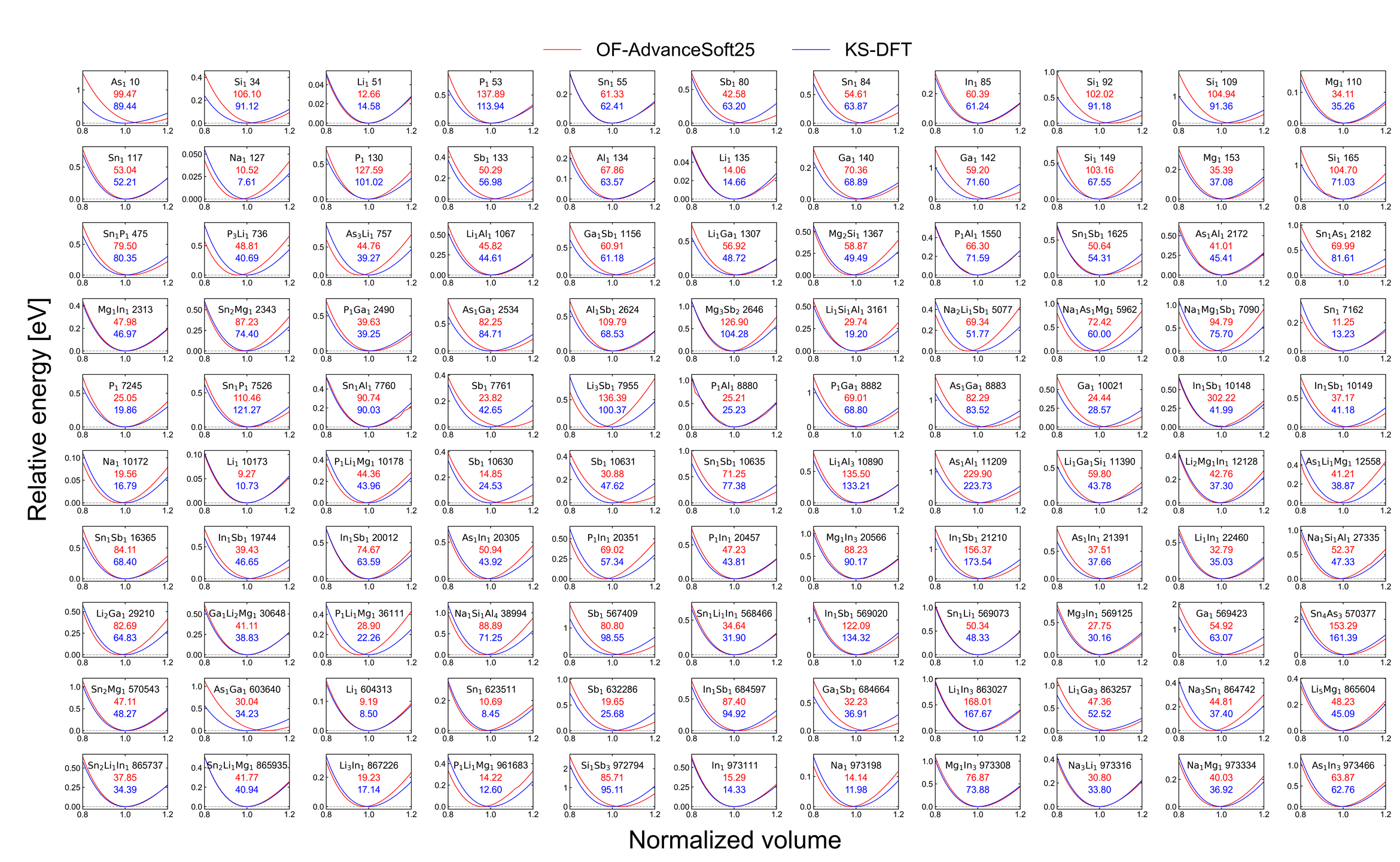
|
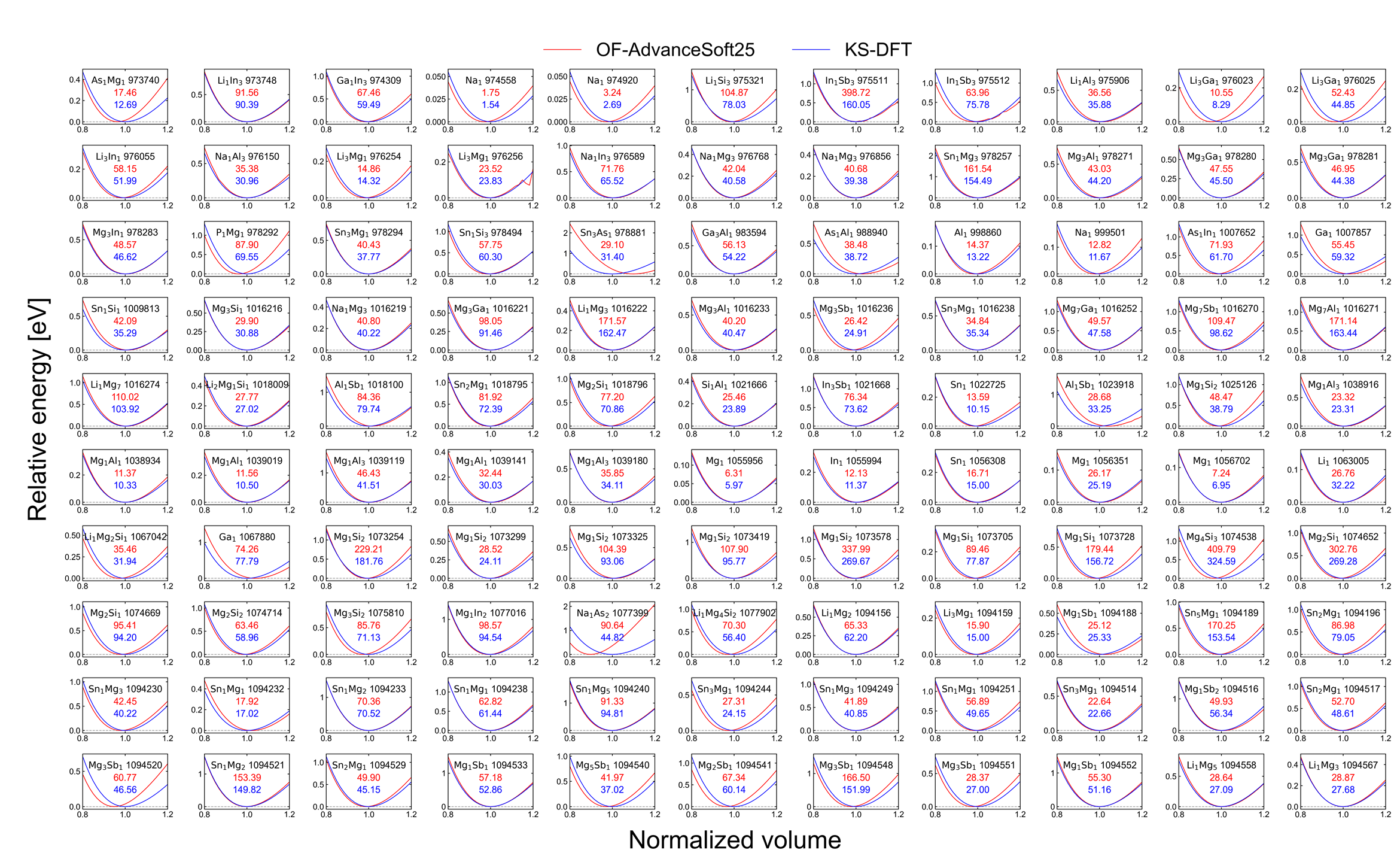
|
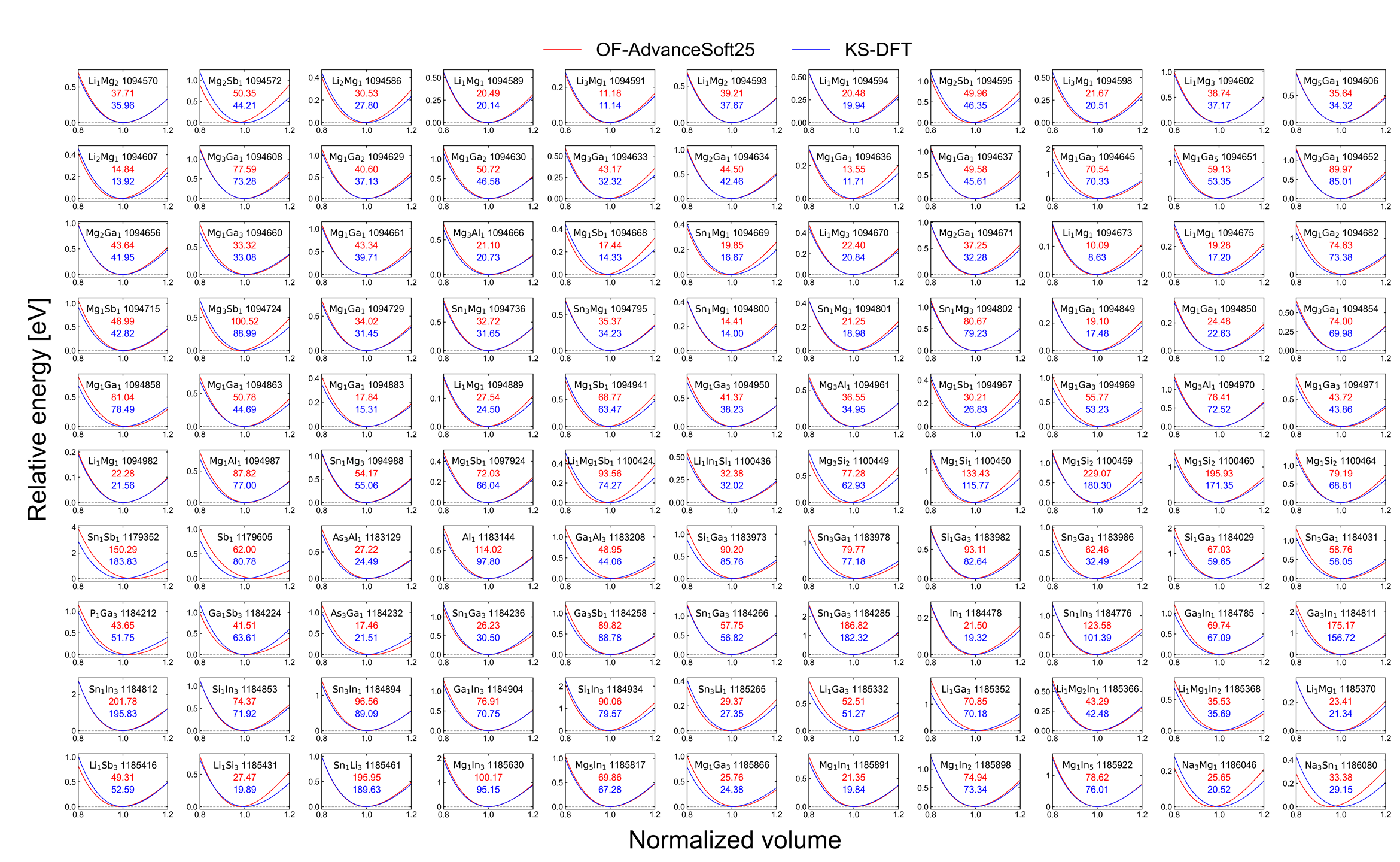
|
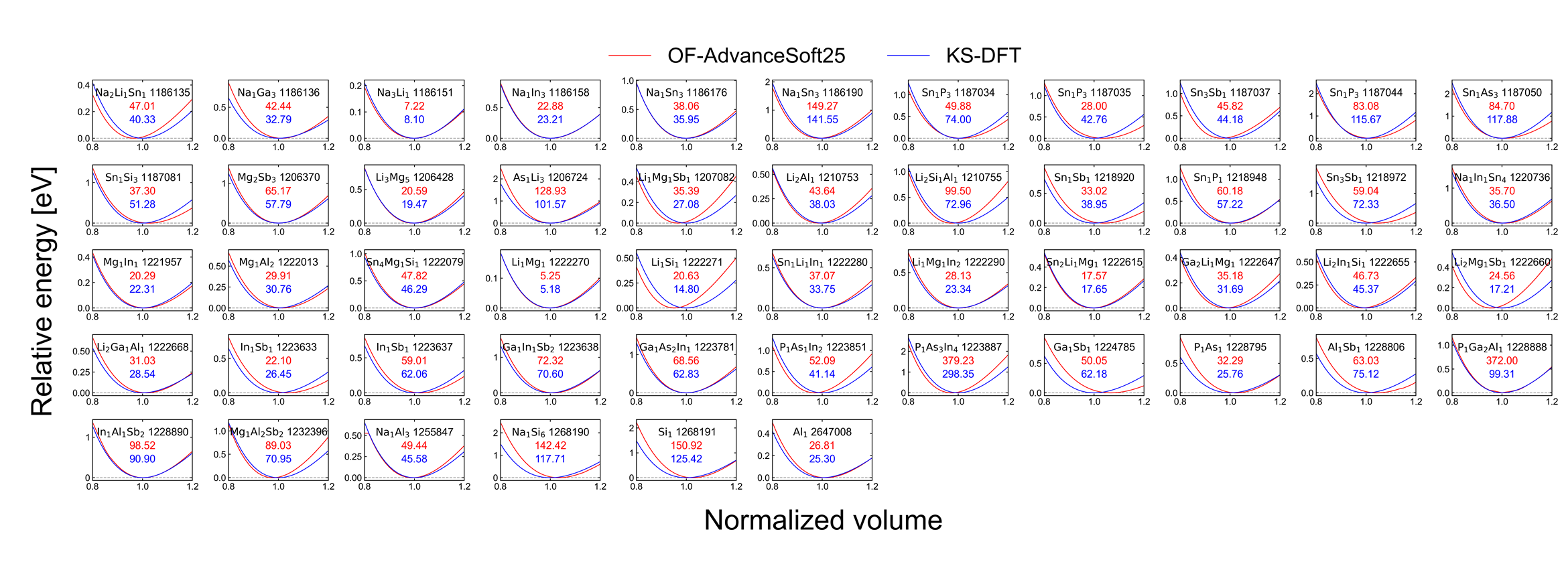
|
| Energy–Volume Curves and Bulk Modulus |
These results show that AS25 successfully reproduces energy–volume curves for most structures, demonstrating both accuracy and versatility.
When evaluating errors in bulk modulus relative to KS-DFT, the mean absolute error was 3.05 GPa and the mean absolute relative error was 8.26%, confirming quantitatively reliable accuracy.
Conclusion and Outlook#
The results demonstrate that AS25 can accurately calculate both the energies of systems deviating from equilibrium and bulk modulus. Therefore, AS25 is expected to be applicable to predictions of various elastic properties as well as structure optimization calculations.
Moreover, in contrast to conventional KEFs that require system-dependent parameter tuning, AS25 enables property predictions for a wide range of materials as a single pre-trained model.
Future work will focus on improving accuracy further by enhancing training datasets, model architecture, and convergence algorithms.